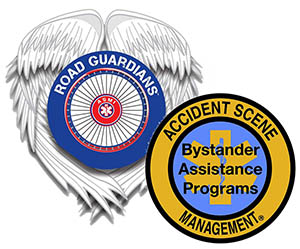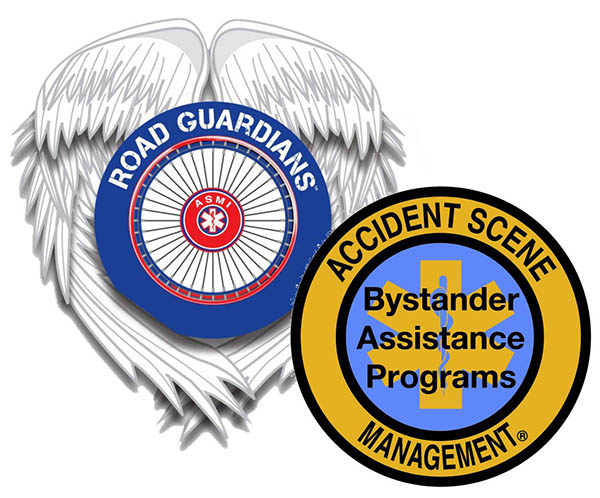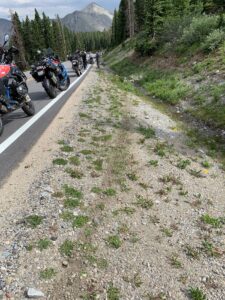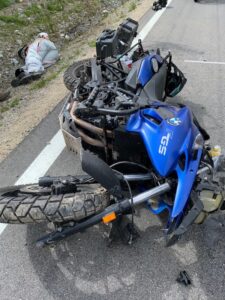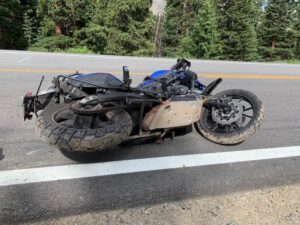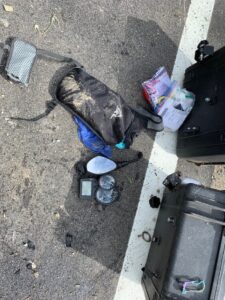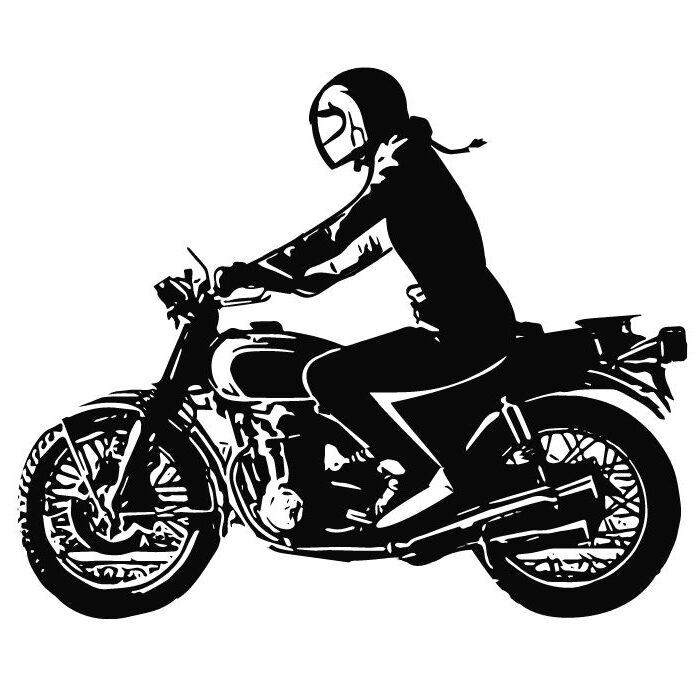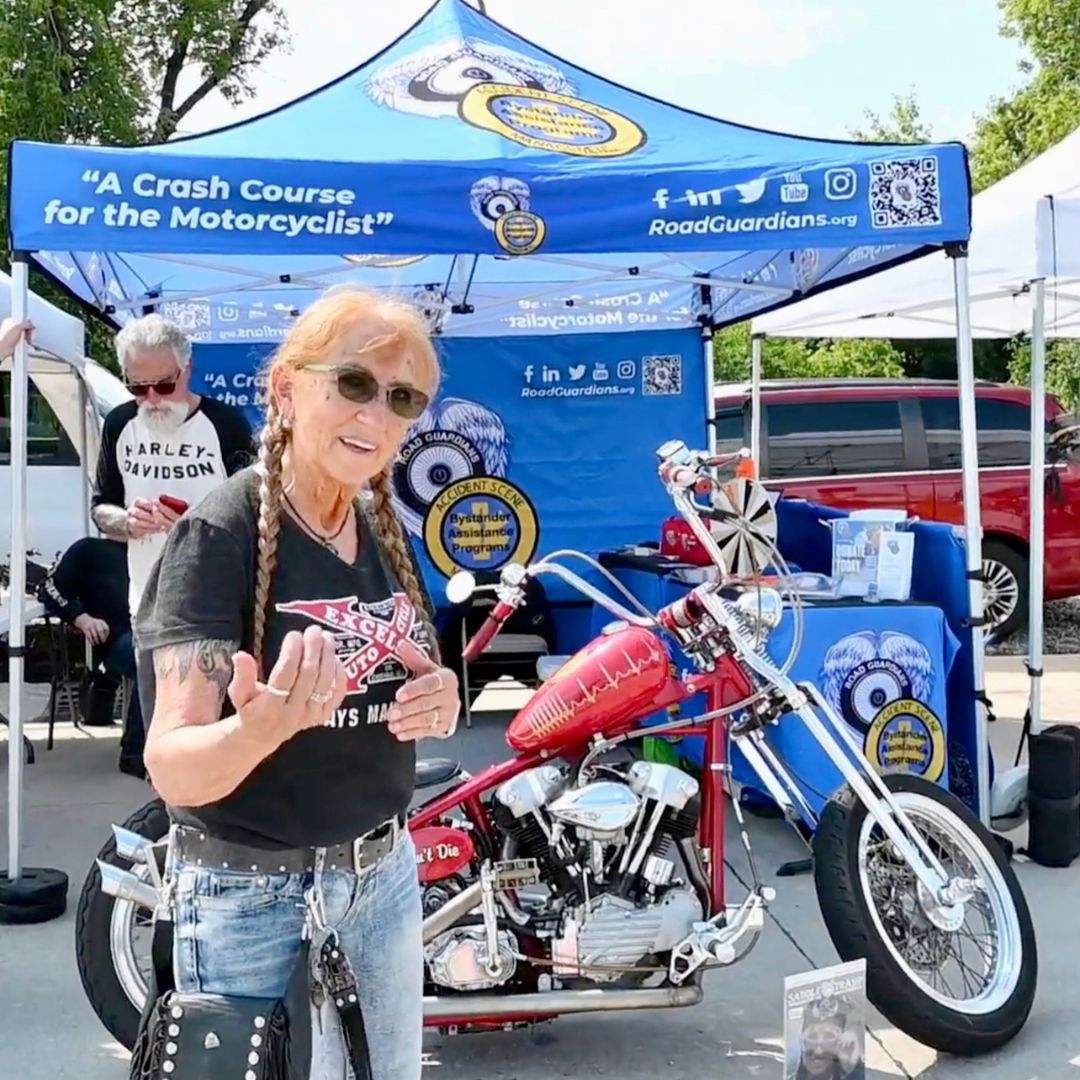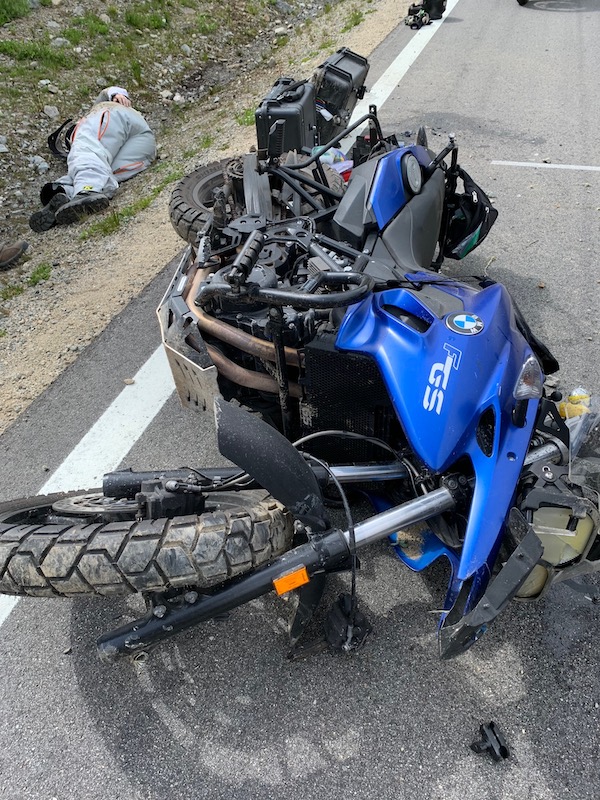
We received the following from one of our students
Vicki,
I am so sorry it took me so long to get this to you. I was hung up with tons of work stuff. Please let me know if I can clarify anything for you. I realize reliving the crash may bother some riders, but it simply reminds me of how truly blessed I am, so please don’t hesitate to probe for more information.
Please keep doing what you are doing for the motorcycle community. It is vital information that is of the utmost importance!
Jen Barnickel
Jen’s First Hand Account
I took the Accident Scene Management class in Lombard, IL in spring of 2021. In July I took a solo cross-country trip from Chicago to Paonia, Colorado on my BMW F700GS. I reached Paonia on Thursday and set up camp at the top of the Rockies BMW rally after riding through the beautiful twists and turns of many mountain passes. I spent the evening getting to know the Colorado GS girls, an inclusive group of awesome adventure riding women (and some men). Friday morning I set out for a ride with six other riders. We rode throughout the morning, stopped for lunch in Crested Butte, then continued to Cottonwood Pass heading toward Buena Vista. A quick photo-op stop at the top of the pass, then back on the bikes. Less than 1.5 miles from the summit, the unthinkable happened.
I was riding in 2nd position behind the ride leader, and I entered a left-hand declining turn at approximately 40 miles per hour. Suddenly, I couldn’t move the handlebars of the bike. I went into the ditch and went 60 feet down the ditch (parallel to the road) still trying to regain control and get back on the road. Unfortunately, I hit a rock that sent me riding 30 feet up the mountainside. I then separated from the bike on the high side and we (the bike and I) flipped 40 feet back down the mountain. Witnesses said the bike landed on me at least once.
The bike landed on the side of the roadway, and I came to rest on my right side in the ditch about 10-15 feet away. The other riders rushed to check on me but were careful not to touch me. As there was no cell service, one rider continued to ride toward the next town searching for service. Another rider used her GPS to notify family to call EMS.
The other riders began to pick up things that came off the bike, but I asked them not to until they took some pictures first. I requested that they use my phone and told them where to locate it as well as the passcode. I also told them who to notify from my contact list when they could. One rider stayed with me the entire time. He wanted to roll me onto my back to protect my spine, however after taking a little inventory of my injuries I refused to roll. I knew I had broken my right wrist, left hand, and my right leg. I knew for sure my femur was broken, and believed I may have broken my tibia or ankle as well. I was not really feeling pain laying as I was, but knew if I rolled my pain would increase, and EMS would have to roll me again anyway for transport. Aside from that, I knew that a femur fracture has a high risk of causing a bleed from the femoral artery, so I did not want to risk causing a bleed. I knew staying still as I was laying was less of a risk than moving. I did not allow them to remove my helmet at the scene. I told the others where to find my first aid kit (purchased at the Accident Scene Management class) if they needed glow sticks and to make sure their bikes were parked safely. A physician stopped his personal vehicle and checked my condition. I did not want to be cold since there was water running beneath me in the ditch, so I did not let them cut off my gear at that time. The doctor was able to check for bleeding after donning gloves from my kit by reaching up the legs of my pants. He checked my spine as best he could and agreed it was best for me not to be moved. He did not stay on the scene as his family was waiting for him and I appeared stable.
The riders that were with me remained calm and worked together to handle everything. Some were directing traffic, keeping me warm and calm, taking photos, contacting help, and taking caution not to have additional accidents due to the scene being on a curve in the mountains. The crash happened around 4:00pm, so it was still daylight out and visibility was not an issue.
After taking photos of the scene, the riders who were not directing traffic began gathering the debris. A good samaritan stopped in his truck and offered to transport my bike and belongings, but I didn’t accept his offer as the police had not arrived yet and I didn’t want to move the bike. The rider with me kept asking me questions to keep me alert and assess my mental status. At one point he asked me what day it was, and I responded that I knew it was standard protocol to ask that question, but that I was in “vacation mode” and wouldn’t know the answer even without crashing. He felt that was an acceptable answer and we had a little chuckle over it. I began getting cold so other riders were laying their jackets on me to keep me warm and they were going to get the emergency blanket from my first aid kit when EMS finally arrived (approximately 45 minutes after crash). A tow vehicle arrived to pick up the bike and the other riders kept my phone with them so they could notify my family. They made sure to find out where I was being transported before the EMS left.
EMS wanted to remove my helmet, but I respectfully asked them not to as there was not any indication of an issue with my airway. They agreed to leave it on and gave me some pain medication before loading me in the ambulance. Unfortunately the medicine didn’t work, and as soon as they moved me, I was in extreme pain. Once loaded they attempted to remove my boots and gloves, but I was in so much pain I had to make them stop. They gave me some stronger meds and worked to remove my gear. Between doses of meds, they told me they were transporting me to a helicopter to be flown to Colorado Springs. I asked why I had to go by helicopter for just a few broken bones, as I knew helicopters were costly. She explained that due to the femur fracture I was a high-risk trauma, so the helicopter was a medical necessity. They gave me additional ketamine and finished removing my gear (except my helmet).
Upon reaching the airfield, the flight crew insisted on removing my helmet. They initially went to simply pull it off. They were not aware of the removable cheek pads, but were appreciative I told them and how easily it came off. They could not believe I didn’t have a single drop of blood on me or that I never lost consciousness given the extent of the crash. A few doses of ketamine and 35 minutes later, we landed at UC Memorial Central in Colorado Springs and the chaos of the ER began.
It turns out I had broken 2 toes on my left foot, crushed 2 knuckles on my left pinky, had a compression fracture at T5 in my back, broke my right wrist and my right femur. Surgery on Saturday was about 9 hours, but my pinky, wrist, and femur were pieced back together with lots of metal gadgets and I was on the mend.
I may not have survived had it not been for the gear I was wearing and the careful attention I was given by both professionals and the other riders at the scene. I was wearing Forma Adventure boots, Klim Altitude pants with D30 knee and hip armor, Fly Racing mesh jacket with D30 elbow, shoulder, and spine armor, and an Arai XD-4 full face helmet with Alpine Stars Stella carbon-fibered armored gloves. The BMW was totaled by the insurance company, and I was never able to find out what caused the difficulty in steering. Witnesses did not notice anything wrong with my speed, line, or riding, so I will never know for sure what caused the crash.
-Jen
For a current list of classes in your area or to request info to get a group trained click HERE
